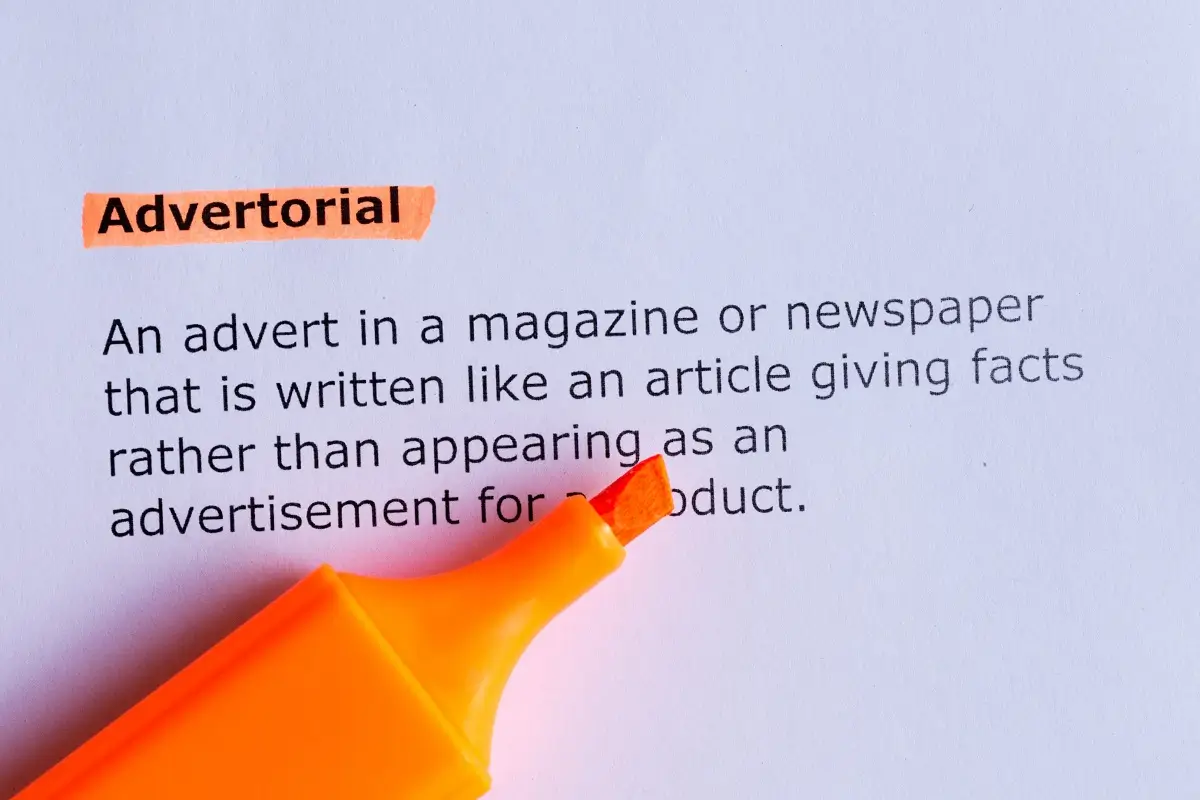If you haven’t had the chance to read Part 1 of this white paper yet, click here to catch up.
Produce a fast read that’s exciting to share
Online platforms have changed the way people acquire content, including the way they read it. The Internet has made information readily available 24 hours a day, seven days a week. The novelty factor has long worn off, with fewer people bothering to actually read marketing materials in full.
They speed read instead.
What does that mean for tech firms aiming to establish a corporate reputation and build trust in business? It means that your marketing materials – whether hard or soft copy – have to be written so they’re easy to skim and scan. And yet, tech firms continue to flood their users with verbiage. Clear stakeholder communication is crucial for slicing through the clutter and delivering the right message to the right audience with impact.
A McKinsey Global Institute report on social economy has shown that office workers spend 28% of their average week reading and answering email while searching and gathering information comprises only 19% of their time. In light of constraints affecting today’s workforce, tech firms’ best bet is to make relevant information easy to find and, in turn, strengthen trust in business.
According to Richard Branson, all effective pitches must be free of jargon and pithy enough to fit on a glass coaster. “If your pitch can’t fit on a beer mat, a napkin, or back of envelope, I’d rather listen to someone else’s pitch that can fit,” he said.
Plan information architecture so that important bits stand out. Guide users with “document road signs” that are meaningful for them and pepper the copy with language that grips readers. This is will establish your tech firm as an authority, and by extension, reinforce trust in business.
This will encourage users to share content, boosting trust in business and strengthening the corporate reputation of tech firms in the process. For tech firms fighting to stay ahead, cutting through the noise with sharp, punchy content is non-negotiable. If you want to build a corporate reputation that actually makes waves in the digital space, forget the fluff and get straight to the point.
More information isn’t always a winning formula. But introducing greater understanding of your topic is.

Editor’s corner
You can boost readability by:
- Starting with a jolt. Write the opening paragraph as a summary of your document. This will help users get the gist of your message, especially if they’re reading a long report. Explain briefly the document’s importance and follow up with suggestions and the conclusion.
- Slicing your text in half. Less is more. Reducing your verbosity by 50% will actually double the quantity of data consumed by the readers. And if you’re recycling content from existing sales copy, chop the material ruthlessly before it makes its way to your online platform.
- Choosing illustrative headings. You can improve understanding and increase readability by using headings that specifically describe each section. If you describe each section in your headings, you will create a narrative thread which, in turn, will boost readability.
- Giving oxygen to wordy paragraphs. Pleonasms put readers off so it’s important to punch a few holes in the narrative. Highlighted text, bullets, headings and shorter paragraphs will reduce density and energize readers.
- Applying consistency. When you implement a particular design or document structure, don’t change the course half way. Consistency ensures that readers follow your document like a map, and easily retrieve relevant information which will strengthen your corporate reputation at the same time.
Convey meaning and value
What’s the primary purpose of your business writing? To decipher crude data for your users.
Statistics and industry-specific terms can rapidly become a regular occurrence for business writers, especially in-house writers. The outcome is that users who could benefit from the narrative, but don’t speak tech, will disengage—potentially affecting your corporate reputation.
A writer’s job is to always ask, “Why this?” And then provide a wider context. This involves choosing data that’s applicable and timely, and then presenting it in plain words.
Don’t be deceived believing that numbers can tell the whole story. It’s impossible.
Find the right balance between a tech wizard and a laid-back browser. Because you don’t know who’s perusing your website: It may be an admin with tech background. But it can also be a manager who can only pick up the thread of your product line, but may not be as proficient in the sophisticated nuances of your narrative.
Also, don’t assume that prospects understand your company, or the industry for that matter. A clear, approachable writing style not only ensures your strategy is well-communicated but also helps maintain a strong corporate reputation. When you embrace brand authenticity, you ditch the pretense and forge genuine connections with your audience. Why is authenticity important in general? Because it builds trust and fosters loyalty in an increasingly skeptical marketplace.
For highly technical thought leadership documents, the best tactic is to pace the way you arrange information and figures. You don’t want to overwhelm your reader with too many words, or too many numbers. This involves rolling out one powerful detail after another to construct your narrative. It also means planting no number on the page without providing context.
Editor’s corner
Always aim to leave the user better informed. To achieve this you need to produce effective corporate communication hinging on meaningful content that:
- Is data-centric. All prospects are driven by the desire to make money. But unless you convert your data into a message that spells out how your prospect’s business will grow, your efforts are futile.
- Includes real experiences. When you feature authentic quotes from real people who have benefited from your product or service, you create a stronger connection with your audience, reinforcing trust in business and your corporate reputation. It also drives home why authenticity is important: it sparks loyalty in a world filled with skeptics.
- Demonstrates rather than declares. Showing facts cements your stakeholder communication credibility by a case in point. And it reduces the possibility of blowing one’s own horn. A demonstration of data is like an x-ray that reveals information rather than describes it.
- Informs. Talk about the functionalities and advantages of your offer, their market relevance and how they solve your prospects’ problems.
- Has an element of surprise. Have the courage to alternate between constancy and disruption. Everyone needs a bit of variety. Meaningful marketing materials that are laced with humor and surprise keep audiences engrossed, making your corporate communication stand out, while bolstering your corporate reputation.
Use words to convey emotion
Just as word-of-mouth fables have stood the test of time, a well-crafted story stirs up your readers’ emotions about the data braided into it.
Regardless of the promotional format you’re writing – sustainability report, blog, white paper or knowledge base – the goal remains the same: influence. As marketing influencers, your job is to convince companies to buy your products. Employees have to be convinced to follow your business plan. Investors must be convinced to buy your shares.
But most business communications fail to convince.
Much of today’s corporate communication doesn’t provoke even the slightest emotion because business leaders stick with predictable language. This tactic can best be summed up like this: Our main business problems remain sluggish economic recovery and lower-than anticipated projections. We are taking the following steps to minimize risks going forward.
The company then rolls out corporate communication initiatives in support of this justification. Sadly, this corporate communication tactic is full of holes, potentially harming its corporate reputation.
- It sounds like an excuse.
- Your readers have their own set of assumption which, more often than not, collide with your own.
- Audiences are less likely to be inspired by a narrative based on a set of macroeconomic indicators.
A powerful story, however, can combine strategy and passion effectively. This is one of the best recipes to peak your readers’ curiosity and invoke appropriate emotions.
Even so, write in moderation. Avoid going on a tangent saying great things about yourself. You’ll only risk venturing into fantasy terrain and arousing skepticism in your audience. Remember than even candid accounts packed with facts are often viewed with cynicism.
If the story sounds too good to be true, expect readers to be suspicious – it could end up damaging your corporate reputation.
Editor’s corner
You don’t need a built-in flare for drama to produce a compelling story. Just adopt the following simple rules:
- Give structure to your story with a beginning, middle and end. Without structure, contents will be scattered like a bathtub overflowing and your readers will think you’re rambling.
- Pick the right villain: paint your client’s problems as the adversary. Then empower your customer with the superpower that is your solution.
- Don’t give a laundry list of your business departments – tell your readers why it was founded in the first place. Leverage your corporate communication to demonstrate how your business creates tangible value for stakeholders and positively impacts society. What it believes in and where it’s heading.
Smile often and have fun with your marketing materials
If this paper demonstrated anything, it’s that fostering credibility and writing effectively is serious business – and a vital part of shaping your corporate reputation. Now and then, however, injecting a bit of humor can be just as valuable.
Former Twitter chief operating officer Dick Costolo, who trained in improvisational comedy, sent out a tweet in 2009 saying the following, “First full day as Twitter COO tomorrow. Step one, undermine CEO, consolidate power.” As it turned out, Costolo really did become Twitter’s chief executive the following year. He held that position for five years before leaving the company.
Now consider the standard executive bios. A good many of them are written with a monotony rivaling a tax audit. Plus, writers routinely persist on hoarding a whole life’s chronology into a biography when few hand-picked details will do.
As Maurice Schweitzer of University of Philadelphia’s Wharton School points out, humor can boost status. Being funny means taking a risk, and being risky shows confidence. And in the corporate world, people look up to those who are confident —a quality that can strengthen a leader’s corporate reputation. A little humor also establishes rapport, which may inspire your audience to respond positively, reinforcing brand authenticity.
What’s more, a Robert Half survey found that 91% of executives believe a sense of humor is important for career advancement; while 84% feel that people with a good sense of humor do a better job. Plus, an academic paper has confirmed that humor has a positive influence on a range of desirable organizational outcomes – group cohesiveness, team performance, employee resilience and coping, citizenship behaviors and leadership effectiveness.
Editor’s corner
Jokes are no laughing matter. They’re great devices for cajoling a chuckle from your readers and inciting positive feelings about your company, ultimately enhancing your corporate reputation. Sprinkle your text with:
- Details. Details. Details. Avoid broad statements and focus on authentic moments that jump off the page.
- Dramatic contrast. Polarizing opposites provide texture and reduce dullness (a rugged man in a flannel suit picked up the baby and started spinning around).
- Exaggeration. You don’t have to blow things out of proportion, but inflating things beyond their real scope can create a powerful comic effect (my big tummy is actually sunken muscle).
- Unusual words. Used sparingly, words that aren’t part of our daily verbal traffic add vigor to the narrative (credulity, noisome, vitriol).
- Eccentric hobby. Sharing information about your unusual pastimes shows authenticity (you may see my collection of red-lipped batfish photos here).
Inject these insights into your stakeholder communication, and you’ll crank up clarity and engagement while fortifying your corporate reputation in a market that’s more skeptical than ever. Why is authenticity important? It builds trust, fosters genuine connections, and sets your brand apart. Sign up for my newsletter to receive exclusive insights, tips, and resources that will empower you to strengthen your brand authenticity.







